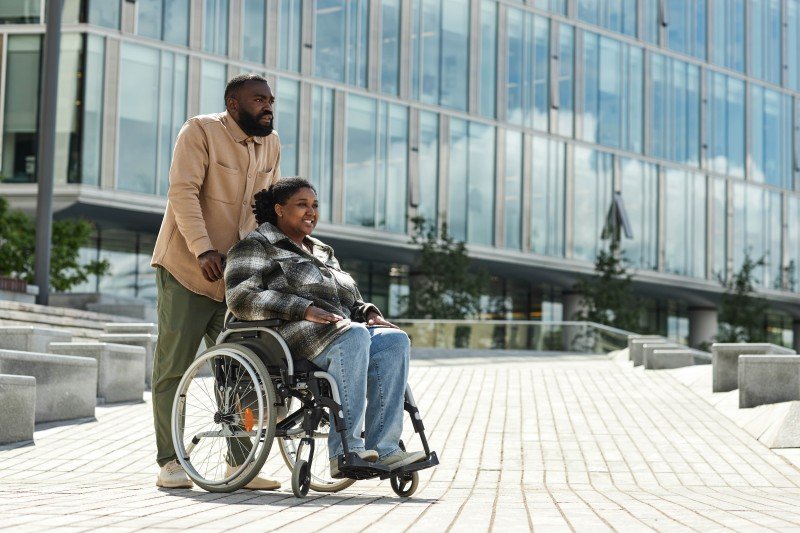Electric Mobility Scooters UK: A Comprehensive Guide
Electric mobility scooters have rapidly end up being a crucial part of contemporary transport, particularly in the United Kingdom. These devices use a convenient, environmentally friendly, and economical option for people with mobility problems, permitting them to maintain their independence and navigate their day-to-day lives with higher ease. This short article provides a comprehensive summary of electric mobility scooters uk - go to these guys - mobility scooters in the UK, including their advantages, types, legal factors to consider, and suggestions for selecting the best design.

Intro to Electric Mobility Scooters
Electric mobility scooters are motorized cars created to assist individuals with strolling troubles or other mobility impairments. They can be found in numerous sizes and designs, from compact designs for indoor usage to robust, all-terrain scooters for outside activities. These scooters are powered by rechargeable batteries and can reach speeds of as much as 8 miles per hour, depending upon the design.
Benefits of Electric Mobility Scooters
- Boosted Independence
- Mobility scooters make it possible for users to take a trip longer ranges without tiredness, minimizing the requirement for help from others.
- Cost-Effective
- Compared to other types of transport, electric scooters are relatively economical to acquire and keep.
- Eco-Friendly
- Electric mobility scooters produce zero emissions, making them an ecologically friendly choice.
- Improved Accessibility
- These scooters can be utilized in various settings, from supermarkets and shopping centers to parks and leisure locations, increasing availability.
- Social Inclusion
- By providing a means of transportation, mobility scooters help users stay socially linked and engaged in neighborhood activities.
Kinds Of Electric Mobility Scooters
Class 2 (Electric Wheelchairs)
- Designed for use on pavements and footpaths.
- Optimum speed: 4 miles per hour.
- Appropriate for indoor and outside usage.
Class 3 (Electric Mobility Scooters)
- Can be used on roadways, pavements, and paths.
- Maximum speed on roads: 8 mph.
- Maximum speed on pavements: 4 mph.
- Perfect for longer journeys and outside usage.
Foldable Scooters
- Compact and light-weight, developed for easy storage and transport.
- Appropriate for users who regularly take a trip or have limited storage space.
All-Terrain Scooters
- Built to manage rough terrain and off-road conditions.
- Frequently have larger wheels and more effective motors.
- Perfect for users who delight in outdoor activities like treking or gardening.
Sturdy Scooters
- Designed to support users with greater weight capacities.
- Strong building and boosted toughness.
- Appropriate for individuals who need a more robust and reputable alternative.
Legal Considerations in the UK
Licensing and Insurance
- No driving license or insurance is required for Class 2 and Class 3 mobility scooters.
- However, users need to be at least 14 years of ages to ride a Class 3 scooter on the road.
Roadway Rules
- Class 3 scooters must have a red and amber light system and a rear reflector to be utilized on the roadway.
- Users should follow road rules and understand their surroundings.
- Pavement usage is limited to 4 mph for both Class 2 and Class 3 scooters.
Disability Allowance
- Some users may be eligible for a mobility allowance through the UK government, which can help cover the cost of a scooter.
- The Motability Scheme is a government-funded program that supplies monetary help for purchasing mobility help.
Tips for Choosing the Right Electric Mobility Scooter
Evaluate Your Needs
- Figure out where and how you will primarily use the scooter (inside, outdoors, both).
- Consider the distance you require to take a trip and the surface you will experience.
Test Ride
- Go to a regional mobility shop to check trip various models.
- Make sure the scooter is comfortable and easy to operate.
Battery Life
- Select a scooter with a battery life that suits your daily needs.
- Consider the charging time and the availability of backup batteries.
Weight Capacity
- Inspect the weight capacity of the scooter to ensure it can support your needs.
- Sturdy models are readily available for users with greater weight requirements.
Functions and Accessories
- Try to find features like adjustable seats, tilt systems, and easy-to-read control panels.
- Think about accessories such as baskets, seat belts, and weather protection.
Upkeep and Safety
Routine Check-Ups
- Set up routine upkeep checks to make sure the scooter is in excellent working condition.
- Replace used parts and recharge the battery frequently.
Safety Gear
- Always use appropriate security equipment, such as a helmet and reflective clothes.
- Use lights and reflectors when riding in low-light conditions.
Roadway Etiquette
- Be polite to pedestrians and other roadway users.
- Follow designated courses and avoid congested areas.
Storage and Security
- Store the scooter in a dry, safe area to prevent damage and theft.
- Consider utilizing a locking mechanism or GPS tracker for added security.
Often Asked Questions (FAQs)
Q: Do I need a driving license to utilize an electric mobility scooter in the UK?
- A: No, a driving license is not needed for Class 2 or Class 3 mobility scooters. However, users must be at least 14 years of ages to ride a Class 3 scooter on the road.
Q: Can I use my mobility scooter on the pavement?
- A: Yes, both Class 2 and Class 3 scooters can be used on pavements and walkways. The maximum speed on pavements is 4 miles per hour.
Q: How much does an electric mobility scooter expense?
- A: Prices vary depending upon the model and functions. Entry-level scooters can cost around ₤ 500, while advanced designs can vary from ₤ 1,000 to ₤ 5,000.
Q: Is there financial help offered for buying a mobility scooter?
- A: Yes, the Motability Scheme provides monetary assistance for qualified people. You may likewise be eligible for a disability allowance to help cover the cost.
Q: How far can an electric mobility scooter travel on a single charge?
- A: The variety differs by model, however the majority of scooters can travel between 10 to 30 miles on a single charge. Durable designs may have a much shorter variety.
Q: Can I transfer my mobility scooter in a vehicle?
- A: Yes, collapsible and lightweight models are created for simple transport. Some automobile manufacturers also offer adaptive equipment to accommodate mobility scooters.
Q: Are there any age restrictions for using a mobility scooter?
- A: There are no particular age constraints for using a Class 2 scooter. However, users should be at least 14 years of ages to ride a Class 3 scooter on the road.
Q: Can I use my mobility scooter in bad weather?
- A: Most electric mobility scooters are weather-resistant, however it's suggested to utilize caution and avoid extremely damp or icy conditions. Think about adding weather condition security accessories.
Electric mobility scooters have reinvented the way individuals with mobility concerns travel and participate in everyday activities. With their numerous advantages, including enhanced self-reliance, cost-effectiveness, and environmental friendliness, they are a valuable financial investment for lots of people. By understanding the various kinds of scooters, legal considerations, and upkeep ideas, users can make informed choices and take pleasure in the full range of benefits these devices use. Whether you are searching for a compact indoor model or a robust all-terrain scooter, there is a best alternative readily available to fulfill your needs and boost your lifestyle.
Extra Resources
- Motability Scheme: Visit the main site to learn more on monetary help and eligibility.
- Department for Transport: Read the guidelines for utilizing mobility scooters in the UK.
- Regional Mobility Shops: Find a respectable shop in your area to test ride and buy a mobility scooter.





